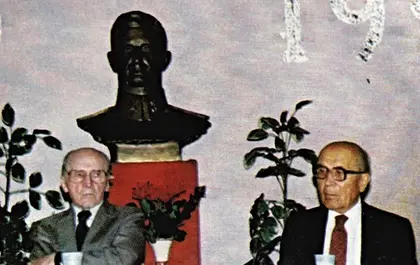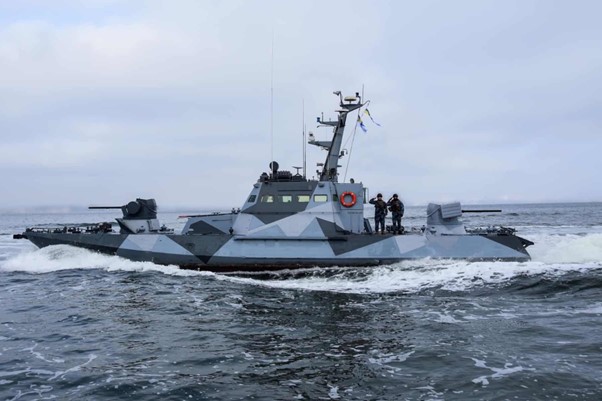[Editor’s Note] The Ukrainian Supreme Liberation Council (UHVR) was formed in July 1944 in war-torn Ukraine uniting the Organization of Ukrainian Nationalists (OUN), Ukrainian Insurgent Army (UPA) and other Ukrainian patriots resisting the Nazis and Soviets. After a split in exile in the late 1940s within the OUN, the more liberal wing known as the “Dviykari” split from the followers of Stepan Bandera and retained the Extern Representation (ZP) of the UHVR. It drew support from many emigre Ukrainian intellectuals and was linked with the CIA-backed Prolog Corporation, based in New York, which published the influential pan-ideological magazine “Suchasnist.”]
In 1948, the CIA’s Office of Policy Coordination (OPC) selected the émigré organization Ukrainian Supreme Liberation Council (ZP/UHVR) as the “most reliable, best organized and operationally most experienced group for use in exploiting anti-Communist activity of the Ukrainian resistance group then active in Ukraine.” The CIA used various cryptonyms for its projects using ZP/UHVR, including QRDYNAMIC.
JOIN US ON TELEGRAM
Follow our coverage of the war on the @Kyivpost_official.
Below are excerpts from an August 1971 the CIA’s Covert Action division: “Memorandum for the Record.”
“SUBJECT: CIA Support of ZP/UHVR (Foreign Representation, Ukrainian Supreme Liberation Council)
“During the 1971 (CIA) headquarters review of Project QRDYNAMIC, which supports the ZP/UHVR, the logical question was raised whether the CIA is in fact supporting the "right group" of Ukrainian emigres in its efforts to encourage dissidence in Soviet Ukraine. The undersigned officer has attempted to examine the present status of the world Ukrainian emigre community, with the aid of QRDYNAMIC principal agents, in order to reach a conclusion in this respect.

Zelensky Says Ukraine Military Aid Not Part of US 90-Day Aid Suspension
“The political spectrum of the profusion of Ukrainian emigre political parties in the period following World War II is broad. The Ukrainian, for historical reasons, is a political animal and a compulsive organizer with very definite and vocal political views. His arch enemy is, as it has been for centuries, Russia, whether Tsarist or Soviet. The Ukrainian emigration is nationalistic and distinctive because it has traditionally maintained close contact with the homeland. The post-war Ukrainian emigration represented a virtual government in exile whose aim was to liberate Ukraine from Russian domination and establish an independent Ukrainian state. At present, most of the former influential military and civilian emigre leaders are dead or inactively retired. Some of the numerous political parties have become little more than social groups whose members nostalgically recall more vigorous and active days. The emigres also have many social, civic, and fraternal organizations which are of no interest
to us.
“The ZP/UHVR, in common with all emigre groups, had its share of internal strife in the 1940s and 1950s, but has stabilized remarkably since that time. From the days when it was an elite political advisory body to the Ukrainian underground movement fighting first the German Wehrmacht, and later the Soviet Army, its leaders have developed a political maturity that distinguishes it from other emigre political groups. Despite its title of "Ukrainian Supreme Liberation Council" the officers of the ZP/UHVR realistically have no illusions about promoting an internal revolt which could only result in senseless slaughter and extreme repression.
“Although supporting nationalist aims, they do so by promoting political liberalization and encouraging the cultural independence of Ukraine through free literary expression in Ukrainian, a highly developed Slavic language of which they are fiercely proud. The Soviets give lip service to the development of national languages such as Ukrainian, Byelorussian, Lithuanian, and Uzbek, but information from ZP/UHVR contacts inside Ukraine, and confirmed in part by other sources, indicates that in actual practice the Soviets are discouraging the use and spread of non-Russian languages. This fact challenges the ZP/UHVR to exfiltrate self-published dissident Ukrainian samvydav (Russian samizdat)
“It seems clear that if the CIA is interested in continued support of a political group that is energetically fighting Soviet repression of national minorities in the Soviet Union, the ZP/UHVR is our most effective vehicle.
“This serious and dedicated group of intellectuals has shown its appreciation for CIA support over the past twenty years by rendering the type of cooperation that has contributed
to our covert action as well as a positive intelligence mission against the Soviet Union.”
The CIA would continue its operational activities with ZP/UHVR until it terminated the project on 30 September 1990.
You can also highlight the text and press Ctrl + Enter










